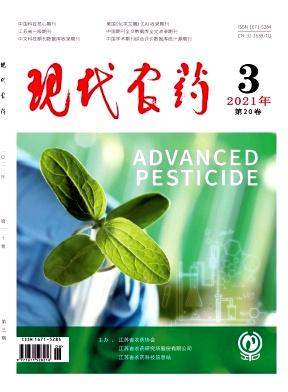BioControl Agents in Europe: Substitution Plant Protection Active Substances or a New Paradigm?
引用次数: 0
Abstract
Biocontrol agent (BCA) plant protection active substances composed from microorganisms, semiochemicals and substances from natural origins are increasing in Europe, since their entry into force of Regulation (EC) 1107/2009, in number and as a percentage of total active substances. As they are included in the scope of plant protection products (PPPs), this raises the question as to whether they are only substitute active substances, more socially acceptable, sustainable and environmentally preferable, or really another way of managing bioaggressors, pests and diseases. As we have conducted a survey of all active substances listed in all Parts of Regulation EU 540/2011 and compared chemical to BCA active substances, described their evolution and characteristics since 2011 and predicted the global perspective in the future years for both chemical, which are in decline, and BCA AS separately, these works raised the question of whether these BCA AS are a substitution, as is often the case for users, for the previous chemical AS, or whether they are fundamentally different new substances, which clearly obey a new vision of crop protection. This study therefore encompasses all active substances approved at any time in Europe since 2011 for both categories, whether still approved or not. At the end of this assessment, the following conclusion can be drawn: BCA AS are mainly fundamentally different substances from chemical AS, in all the compartments studied. A comparison between BCAs and chemical active substances allowed under (EC) 1107/2009 PPP Regulation is described together with a characterisation of BCA AS listed in EC 540/2011 PPP Regulation. Finally, the specific distinction of BCA vs. chemical active substance profile is analysed. This work allows us to conclude on the evolution of crop protection and the means that must be implemented to face current and new threats.欧洲的生物防治剂:替代植物保护活性物质还是新范式?
自法规(EC) 1107/2009生效以来,由微生物、半化学品和天然来源物质组成的生物防治剂(BCA)植物保护活性物质的数量和占总活性物质的百分比在欧洲不断增加。由于它们被纳入植物保护产品的范围,这就提出了一个问题,即它们是否只是替代活性物质,更容易被社会接受、可持续和更有利于环境,还是真的是管理生物侵略者、病虫害的另一种方式。由于我们对欧盟540/2011法规所有部分列出的所有活性物质进行了调查,并将化学品与BCA活性物质进行了比较,描述了自2011年以来它们的演变和特征,并分别预测了未来几年这两种化学品和BCA As的全球前景,这些工作提出了一个问题,即这些BCA As是否可以替代以前的化学As,就像用户经常看到的那样。或者它们是完全不同的新物质,显然符合作物保护的新愿景。因此,本研究涵盖了自2011年以来在欧洲任何时间批准的两类活性物质,无论是否仍然批准。在本次评估的最后,可以得出以下结论:在所有研究的隔室中,BCA AS与化学AS主要是根本不同的物质。本文描述了BCA与(EC) 1107/2009 PPP法规中允许的化学活性物质之间的比较,以及EC 540/2011 PPP法规中列出的BCA AS的特征。最后,分析了BCA与化学活性物质谱的具体区别。这项工作使我们能够总结出作物保护的演变以及必须采取的应对当前和新威胁的手段。
本文章由计算机程序翻译,如有差异,请以英文原文为准。
求助全文
约1分钟内获得全文
求助全文

 求助内容:
求助内容: 应助结果提醒方式:
应助结果提醒方式:


